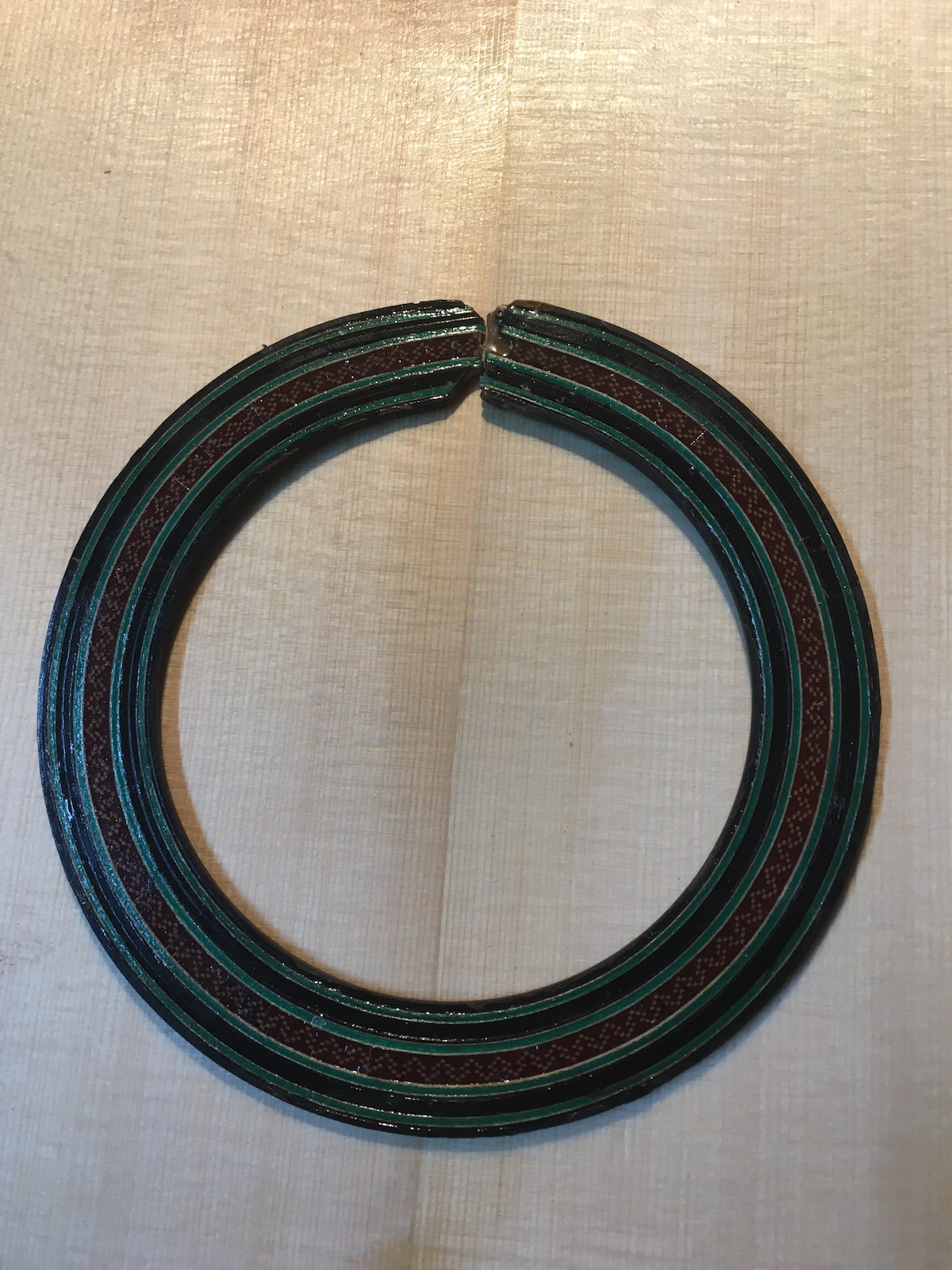Which rosette do you like for your next guitar? I make my rosettes one at a time in a channel and then later install them in the top. My first attempts at installing rosettes directly resulted in considerable warping of the top and a few disasters as the wood swelled because of the moisture from the glue. These days things go quite smoothly. Bone makes a nice change from all wood rosettes and using shapes of solid wood is also a different technique. You can’t see it here but because the diamond shapes are not end grain they are very bright and shiny. I don’t often use coloured wood in my guitars but here you can see a green which contrasts with the natural red in the mosaic.




Category Archives: Guitar making
Bridges
Those who don’t make guitars have no idea how much work is represented here in this photo. Shaping rounded parts and transitioning to straight surfaces, doing inlays, fitting the bridge to the top and sealing the pores are just a few of the difficulties involved in making bridges. I suppose for the most part is is just having so many tasks in such a small space.
Hand Tools
 We make great use of hand tools especially planes, chisels, files and saws but also specialty tools. These can be made by the builder or made to our specifications by local metal-workers. One example of the latter is this cutting gauge which can be used to mark the binding cuts which are then chiselled out. It has a curved side for the waist and a flat side which works well for registering against the top or back. Even with more modern methods it is still often useful for achieving uniformity in the waist area.
We make great use of hand tools especially planes, chisels, files and saws but also specialty tools. These can be made by the builder or made to our specifications by local metal-workers. One example of the latter is this cutting gauge which can be used to mark the binding cuts which are then chiselled out. It has a curved side for the waist and a flat side which works well for registering against the top or back. Even with more modern methods it is still often useful for achieving uniformity in the waist area.
I Jornadas de Organología
The Complutense University of Madrid recently organized a musicology congress specifically centred around musical instruments. This discipline is called organology and is a word which you will not find in typical dictionaries. Among the talks were a fascinating look into the restoration of pianola scores at the Spanish National Library, an overview of the Santos Hernández archive which belongs to the provincial government of Guadalajara and a number of other subjects. Usually when I attend a congress or a festival I pick and choose what I want to attend but this time I found almost everything very interesting. I was invited to speak about the Santos Hernández guitar which Andrés Segovia donated to the Musical Library in Madrid. I have studied that guitar extensively and even drew a blueprint of it.
Day one took place in Sigüenza at the Museum which houses the Romanillos/Harris collection and Santos Hernández workshop. The two following days were hosted by the organizers at the History Faculty of the Complutense University.


Romanillos/Harris Guitar Museum
I finally managed to visit the Casa del Doncel in Sigüenza for the first time. It was a pleasure and an honor to get to see Marion again and to see firsthand some of their important work. The guitars on display are very interesting and of course the workshop of Santos Hernández is full of fascinating clues as to how he worked. In the photo you can see a workboard which shows one of the systems Santos used to put together his guitars. The piece showed here was apparently part of the Metropolitan exhibition and is explained very well in an article by Bruné and Sheppard in American Lutherie. Basically the guitar is built facing down but starting by gluieng the back on first.

The occasion was the I Congress of Organology and the Romanillos-Harris Association and the town of Sigüenza were involved in the organization. Everyone from the Association was helpful and friendly and I hope it continues to grow and do great things. More about the Congress soon. One of the highlights was a short concert by Javier Somoza which took place under the newly discovered mudejar arch.
